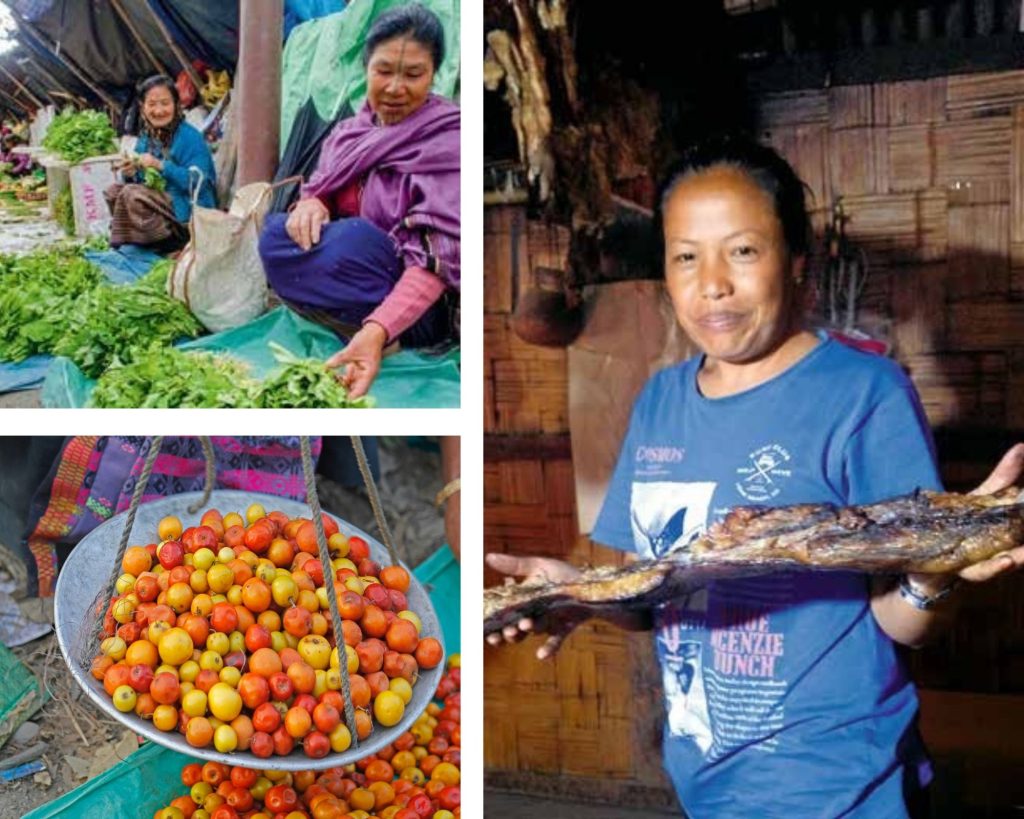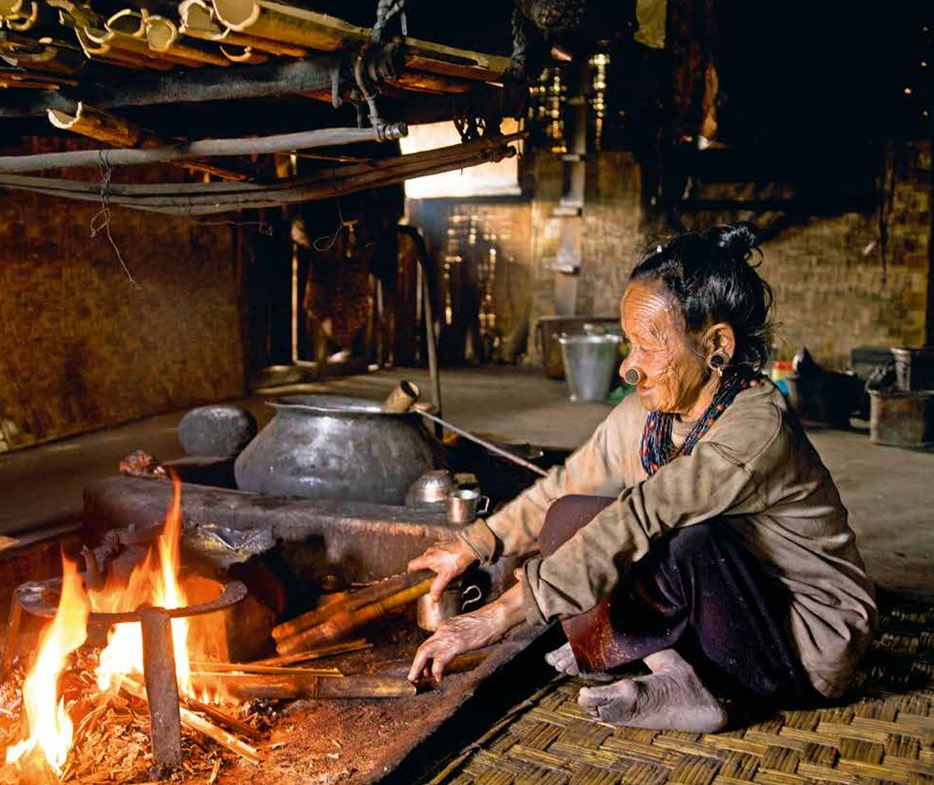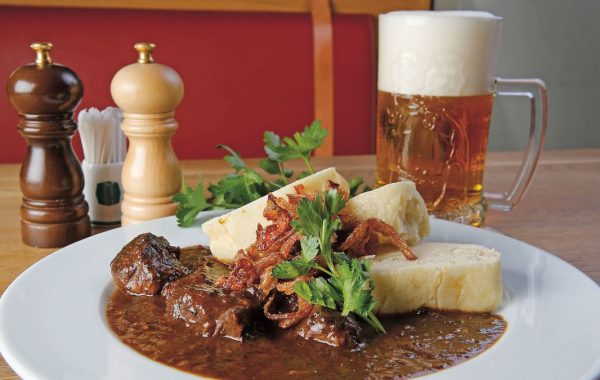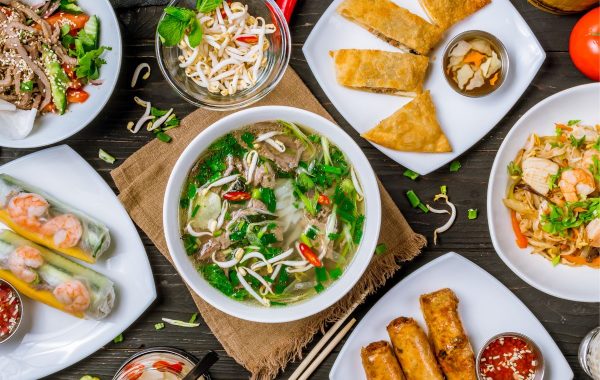Lessons in traditional Apatani cooking in Arunachal Pradesh’s Ziro valley
A cauldron bubbles away on a wood fire in the middle of a dimly lit room that serves as living room, kitchen, dining room, and bedroom. Over the fire, a couple of racks suspended from the ceiling are stacked with a hotchpotch of things—pine wood for the fire, drying corn cobs, and various cuts of pork set out to age. “I have meat aged for a month to that aged for two years,” says my host Yenni Tage, a member of the Apatani tribe living in Ziro, who goes by the pet name, Rani. “I bought some fresh pork from the market for you since some people don’t like the taste of aged meat, but that is what we traditionally cook with,” she explains. I promptly choose to go the traditional way.
Spring is just setting in late March and I’m in Ziro to attend the annual Myoko Festival, a tribal festival that celebrates the friendship between Ziro valley’s eight Apatani villages. This is also the time when rice is sown in the valley’s terraced fields, so Myoko also celebrates fertility with the Apatanis praying for a good crop. Every year, the venue rotates between villages and the festivities last over a month. There’s ritual chanting, revelry fuelled by apong (fermented rice beer), and animal sacrifice presided over by the village shaman.
Amidst all this, I’m on a quest to find authentic Apatani food. Ziro’s restaurants fall into two categories— those serving momos and Indian-Chinese, and tourist-centric spots serving ‘North Indian’ fare (paneer has made it here as well). My guide arranges for me to visit his friend Rani’s home to not only try the local fare but to also get an insight into Apatani culinary practices. I arrive at 5 p.m. to a cup of lal cha, slightly sweetened tea liqueur that the Apatanis seem to guzzle throughout the day. Rani’s home is small but immaculate, and seems to have an open-door policy—her sister’s family, the neighbours, and even the local stray dog drop in while she preps for our meal.
After proudly displaying various cuts of meat, Rani pulls down a shank of pork and gets to work. The meat is chopped into large cubes and roasted one by one over the open fire. After roughly chopping the meat, she puts it in a large pot of water with a little salt for seasoning and several strips of hiiring or fermented bamboo. “You can buy hiiring in the market but we usually prepare this at home by boiling slices of young bamboo shoots and fermenting them in jars for five to ten days before sun-drying them.”

While the pork slow cooks into a stew known as doriibyu, Rani suggests I try the chicken smoked in bamboo, or sudu panii, instead of the barbecued chicken that was originally planned as the second dish. She steps outside and returns bearing a bamboo stalk taller than she is. With a short-handled scythe, she hacks the bamboo into foot-long pieces and then expertly cubes the fresh chicken on a bonti, a strip of metal with a curved blade attached to it. The bamboo is cleaned and stuffed with the raw chicken until two-thirds full. She then stuffs half-cooked rice that her sister brought and adds a few chopped green chillies. Meanwhile, her brother-in-law Mali Tapi stokes the hearth fire to get it going and then carefully places three stuffed bamboo stalks on the fire to allow them to smoke.
The final dish of the meal is a mixed salad made with two types of local greens. “The green and purple leaves are called siiya haman, and are sour to taste, while the bitter-tasting smaller leaves are a wild plant called hugun haman.” After washing them thoroughly, Rani chops the leaves and seasons them with salt and pounded, dryroasted red chillies. “We call this salad hiile pila. We also drizzle a bit of pork fat on it sometimes,” she says. I realise that apart from the natural fat in the meats, not a drop of oil has gone into the entire meal.
Apatani cuisine is rather healthy and boiling is the most common method of cooking. There is hardly any use of spices apart from salt and chillies, and perhaps a dash of pikey pila, a condiment made by burning local grasses and leaves.
While Rani and I chat, Tapi keeps an eye on the smoking stuffed bamboo. He turns the stalks from time to time to allow the stuffing to cook evenly. Almost an hour has passed and the bright green bamboo has charred black on the outside, when Tapi is satisfied that the meat is cooked properly. “The juices from the chicken would have cooked the rice,” he explains as he cuts open one of the bamboos and scoops out the stuffing. “You can also add vegetables to this dish like pumpkin leaves and lai sak (mustard greens),” he says.
Rani brings in the pot of doriibyu while Tapi serves the sudu panii on a plate. The aroma from the steam rising from both the dishes makes my mouth water. One might think that boiled meat is not particularly appetising, but the pork’s natural umami combined with the mild tang of the fermented bamboo gives the dish a unique flavour. The bamboo-cooked chicken is succulent and has a delicate, smoky taste, while the mixed salad adds a crunchy element to the meal. A glass of apong makes an appearance. The slightly pungent drink is refreshing and goes perfectly with the meal (and slightly to my head).
I cannot imagine how oily momos and insipid paneer on restaurant menus trump this thoroughly delicious meal. Sitting on a cane stool by the open fire, I tuck into my best meal in Ziro; the warmth of the hearth is only matched by Rani’s generosity in opening up her family home to me.
Market watch
- Ziro’s market is filled with ingredients you’ve probably never seen or eaten before.
- Hiika hamang or fiddlehead fern is popular all over the northeast. These are harvested when young and eaten stir-fried as a vegetable or side dish.
- Hiiring or steamed and fermented layers of bamboo shoot, is a big part of Apatani cuisine and is used as a pickle or added to meat stews.
- Byako or tiny eggplants are quite bitter but considered a delicacy by the Apatanis.
- Salyo, the fruit from a tree similar to pine, is ground into a powder and used as seasoning; it tastes like Sichuan pepper.
- Pikey pila is a condiment used only by the Apatanis. Grasses, leaves, shoots and stems including papaya or banana stems foraged from local forests are sun-dried and burnt, and the ash is mixed with cold water, which is then used to flavour dishes.
- Pinta and yaju are assorted dried gourds used by the Apatanis as containers or ladles
Essentials
Though Tezpur is the closest airport to Ziro, it’s not well connected and flight timings are erratic. The best way to reach Ziro is to fly to Guwahati and then get to Ziro by road (450 km/approx. 12 hr northeast). Private or shared taxis can be booked from the city. Visitors need an Inner Line Permit to enter Arunachal Pradesh. Curated tours, like those offered by Curtain Call Adventures (curtaincalladventures.com), who the writer travelled with, arrange accommodation, travel, permits, and local culinary experiences.
In Partnership with Arunachal Pradesh Tourism
For the latest travel news and updates, food and drink journeys, restaurant features, and more, like us on Facebook or follow us on Instagram. Read more on Travel and Food Network
Related Coverage
Discover The Beauty Of Arunachal Pradesh Through Bird And Butterfly Spotting
Trekking The Seven Lakes In Arunachal Pradesh
Orange Festival of Music and Adventure | Arunachal Pradesh
Prachi Joshi is an independent travel and food writer based in Mumbai. Her words have appeared in publications such as Conde Nast Traveller, Vistara, Zee Zest, and AD among others. When she’s not writing, you’ll find her in a cafe sipping espressos, people-watching, and perhaps plotting her next trip to Italy. She enjoys photography and is on Instagram as @delishdirection.























